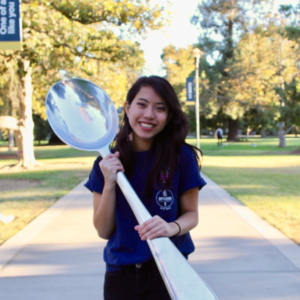I met Linsey Corbin, the Ironman Champion of America, over winter break. No sport is easy, but triathlon especially takes a toll on your body. Racing an Ironman involves swimming 2.4 miles, then biking 112 miles, and finishing it off by running a full marathon. Personally, I could never do it, and after spending years being a spectator, I think that everyone who chooses to is mildly crazy (I’m looking at you, mom).
After spending two weeks with Linsey in Hawaii, a place where the last thing that anyone would want to do is wake up at 6 am and run 13 miles, I’ve come to admire her discipline and willingness to take care of her body. More than anything else, this sport requires you to keep moving forward even after you cross the finish line. Recently I’ve gotten the chance to chat with Linsey about her version of the athlete’s diet and how she balances this physically intensive lifestyle.
AA: I know that triathlon requires long runs and bike rides, and that you can’t necessarily carry much with you. What are your favorite snacks to take along?
LC: Yes, I try to eat similar things in training that I will be eating on race-day so that I can train my body for what it will be going through during a long distance race. Usually, in training, I try to eat a variety of CLIF Bar products. On easier workouts this would be actual bars (CLIF Bars, CLIF Mojo Bars, or CLIF Z-bars). During the race (and on harder workouts) I stick to eating CLIF gels and CLIF Shot Blocks. I also drink some sort of electrolyte drink throughout exercise (normally the CLIF electrolyte drink or whatever the refueling stops have on hand).
AA: What is your go-to pre-race meal?
LC: The night before I like to keep things simple: some sort of grilled or broiled chicken and rice is great. I also like some dark chocolate for dessert. I try not to eat any vegetables or fiber in the 18 or so hours before the race.
Race morning, I will have one cup of apple sauce, a whey protein shake mixed with water, a bottle of CLIF electrolyte drink and 1 CLIF Bar (Sierra Trail Mix is my favorite).
30 minutes before the start I have one double espresso CLIF gel.
AA: Is carbohydrate-loading really necessary two days before the race? What about loading up on salt?
LC: For the longer events (An Ironman will take me 9 hours!), yes, carbo-loading is important. It is also important to eat foods that you know your body can digest and not make your tummy upset. I try to increase my carb consumption in the 24-48 hours before a big race or training day. However, you want to make sure and NOT overdo it on the carbs, as if your body is not used to it, it can lead to GI distress. Yes, I do try to increase sodium intake for races in hot conditions.
AA: What made you want to major in Exercise Science? How has that helped you throughout your career?
LC: I have always loved sports and science so it was a great combination for me. I learned a ton of valuable lessons that have helped throughout my career. Some of my favorite classes were sports nutrition, sport psychology, and exercise physiology and all of them had takeaways that I have been able to apply to my training and racing that have made me a better athlete.
AA: What kinds of foods go into your cart at the grocery store and how do you maintain a good diet on a day-to-day basis?
LC: I try to eat as healthy of a diet as I can when training and racing. I have to fuel to workout, fuel to recover from the workouts, and then fuel again to maintain enough calories. It’s a hard balance. I eat a lot of sport nutrition products in training, so when I am not training I like to focus on eating as many whole and nutrient dense foods as possible.
Some of my grocery store staples include:
Eggs, cottage cheese, greek yogurt, milk, chocolate milk, sharp cheddar cheese
Whole grain bread, pretzels, brown rice, quinoa
Spinach, tomatoes, berries, pineapple, apples, kale, bell peppers, avocado, banana
Tea, decaffeinated coffee, sparkling water
Dark chocolate
AA: Do you have any recipes to share?
LC: Here is an Italian White Bean, Tuna and Arugula salad:
Ingredients:
2 (6-ounce) cans tuna packed in olive oil, drained and broken into chunks. I splurge on the more expensive tuna, but Bumble Bee works as well.
1 (15-ounce) can cannellini beans, rinsed and drained
1 cup grape tomatoes, halved
1 cup olives (optional – we use kalamata, can use black, or none – it’s up to you!)
1 small or 1/2 large thinly sliced red onion
1/2 lemon
1-2 Tbsp olive oil
1 Tbsp stone ground dijon mustard
Salt and pepper to taste
1/4 – 1/2 cup of freshly grated parmesan cheese
1-2 cups of arugula (or other greens)
Combine the tuna, beans, tomatoes, olives and onion in a bowl. Squeeze the lemon over the top, add oil, mustard, and grind up some salt and pepper. Toss these all together until combined.
Add in the arugula and greens and give another good toss. Serve and top with parmesan cheese.
AA: Any guilty pleasures?
I like a good glass of red wine every now and then.
Dark chocolate, key lime pie (made by Annie Altura, of course), chocolate chip cookies, Justin’s Peanut Butter Cups.
It’s comforting to know, at least, that even champions enjoy key lime pie after Christmas dinner.


